The US Space Force, which is intended to have control over military operations in outer space, would be a new branch of the military by 2020, on par with the army, navy, air force, marines and coast guard.
Trump’s remark proves that Washington’s main objective of the space force is not to lag behind in the competition with its traditional rivals.
This is the first time since the adoption of National Security Bill in 1947 that a new branch of military is added to the US Armed Forces. Air Force Space Command (AFSPC), sometimes referred to informally as US Space Command, will be a major branch of the United States Air Force, with its headquarters at Peterson Air Force Base, Colorado. This command intends to support US military operations worldwide with a variety of satellites and cybercrime operations. Approximately 47,000 people in 88 locations throughout the world will carry out AFSPC operations.
Trump believes that a mere US presence in space is not enough, that it must dominate it as he does not want to see the dominance of China and other countries in space.
The new space force will have the same power as the other branches of the US Armed Forces, and will monitor space and cyber-attack operations, including satellite management and launches, including launches of ballistic missiles. But unlike NASA, which focuses mainly on space exploration and scientific discovery, the new space force will focus on military aspects and space defense.
Adversaries
The BBC writes that military and non-military operations in space carried out by the US Global Positioning System (GPS) could interfere with each other. Satellite navigation uses GPS, which the US military invented and is used by civilians, too.
“People are unlikely to know that space is now a military environment,” said Alexandra Stickings, research analyst for Space Policy and Security within the Military Sciences team at RUS, explaining that this has been going on for decades.
During the Cold War, the US and Soviet Union weren’t fighting in space but used spy satellites. At that time, Washington had deployed an anti-satellite rocket in the Pacific Ocean, and Moscow developed a weapon that could destroy a satellite in orbit.
According to Secure World Foundation, China, Russia and the US have the technology to destroy satellites. These weapons are missiles thrown directly from earth to a satellite in orbit.
These weapons are known as “same orbit” and are actually satellites launched by rockets from the ground. After the missile is separated, the satellite will target itself to the orbit of the satellite and will either connect to it or collide with it.
In 2007, China launched an anti-satellite rocket to destroy a meteor orbiting 800 kilometers above Earth. The experiment succeeded.
Meanwhile, Washington has claimed that Russia is developing a laser aerial system designed to disrupt US space systems. The Pentagon also claims that Moscow is creating missiles that can be launched from fighter planes to destroy US satellites.
Cecil Eugene Diggs Haney, a retired US Navy admiral who previously served as Commander, United States Strategic Command (STRATCOM), said that the US should study raise funding for space programs and overall preparedness.
Fruitless efforts to demilitarize space
Although the US is pursuing military goals in space, under the pretext that China and Russia are taking military action there, in 2008 Moscow and Beijing proposed a draft international agreement to prevent the deployment of weapons in space. To this day, Washington has made various excuses and has not signed the agreement.
In 2014, Russia presented another draft resolution to prevent the deployment of weapons in space to the UN General Assembly, which once again faced opposition from the US and its allies.
In line with that, Reuters writes that evidence suggests the Trump Administration has defined space as a new battlefield. In his speech in the Pentagon, Mike Pence said: “History proves that peace only comes through strength. And the next generation of Americans to confront the emerging threats in the boundless expanse of space will be wearing the uniform of the United States of America as well.” Trump’s vice president several months ago also said that the US should strengthen its space force in the future as much as its ground forces.
Many people like Pence believe the US will face new threats in space soon. The Chief of Staff of the US Air Force, General David Goldfein, recently delivered a speech at the Air Force's annual meeting where he said that mankind will eventually face space warfare that must use information from all areas, including air, cyber, land, sea and space, to increase its military strength.
US Secretary of Defense James Mattis has recently announced that the Pentagon agrees with the plan to form a space force and considers space a new battleground and that it plans to create a combat command. He added that the Pentagon fully understands Trump’s concerns about protecting U.S assets in space, thus the US intends to take this into account because other countries have shown that they can attack these assets.
NASA chief told CBS News in an interview last month: “Our very way of life is dependent on space. If we lose the GPS signals, there are no interbank transfers, and no food in the stores among other things, which is why hostile countries around the world are taking steps to harm US capabilities.”
Some argue that the formation of a space force is time-consuming and requires a huge effort. Some political observers have also warned that a space force could trigger an arms race in outer space. Critics believe that many of the assigned missions are already being carried out by the other branches of the US military, and that a “space force” is unnecessary and too costly.
Former US Secretary of the Air Force Deborah Lee James has claimed that few or no one in the Pentagon wants President Trump’s Space Force. “None of them are in favor of a Space Force, I say none of the top leaders, but they're stuck.”
She also said that close to 35,000 people are already working in the US Air Force and formation of a new military wing could be disruptive.
Since Democrats in the US Congress also do not support Trump’s plan, formation of a US space force may also face a legal barrier. For example, Senator Brian Emanuel Schatz has called establishment of US Space Force a stupid idea and predicted that it would never be realized.
Vermont senator Bernie Sanders has also criticized the plan saying, “Maybe, just maybe, we should make sure our people are not dying because they lack health insurance before we start spending more billions to militarize outer space.”
Farid Karimi writes in Zoomit: “The United States now has more than 800 satellites in total, but while the US Army will not need any new satellites, it cannot form a space force overnight. The formation should be approved by the Congress, just as the US Air Force separated from the Army long ago with Congressional approval.
A new weapons market
In addition to the US, Russia, and China, many other states such as India, Iran and Japan have been operating in space and have launched satellites. No doubt they will also try to improve their defenses against their enemies in space. This will ignite a weapons race and a new weapons market.
The US, Russia and China are three of the world’s largest arms manufacturers and the world’s weapons market is in their hands. The formation of a new arms market puts more profits into the pockets of arms manufacturers. That may be one reason for Trump’s insistence on the development of US space forces.
MNA/TT






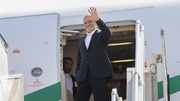



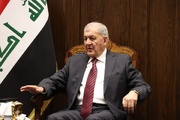

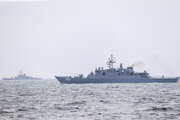
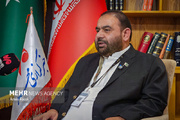


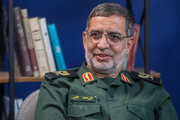



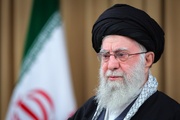


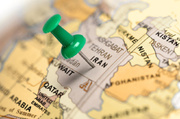

Your Comment